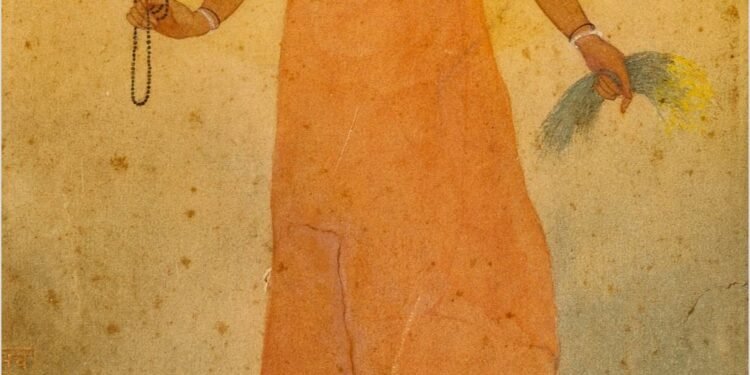Introduction
Painted in 1905 during the Swadeshi movement, Abanindranath Tagore’s Bharat Mata is one of the earliest and most influential visualizations of “Mother India,” depicting a saffron‑clad, four‑armed woman holding a book, sheaves of paddy, a white cloth, and a rudraksha mala—an emblematic quartet standing for knowledge, sustenance, clothing, and spiritual faith.

Historical context
The image emerged amid protests against the Partition of Bengal (1905), when Swadeshi activists used boycott, indigenous production, and cultural revival as political tools; Tagore crafted the painting as a galvanizing symbol for a nascent national identity rooted in Indian aesthetics rather than colonial academic realism. Initially conceived as “Banga Mata” (Mother Bengal), the image rapidly circulated in print and exhibitions as “Bharat Mata,” becoming a pan‑Indian icon for anti‑colonial mobilization.
Composition and symbolism
Four hands and halo: The multiple arms borrow from Hindu divine iconography to signal power and sacred protection; a double halo and lotuses around the feet enhance the aura of sanctity.
The four objects:
Book or manuscript = knowledge/education;
Sheaves of paddy = food/agrarian abundance;
White cloth = clothing/self‑reliance in textiles;
Rudraksha mala = faith/spiritual discipline.
Saffron robes: Evoke ascetic self‑sacrifice and moral resolve, aligning political resistance with spiritual purpose central to the Bengal School’s nationalist idiom.
Bengal School aesthetics
Abanindranath, foundational figure of the Bengal School, deliberately departed from Western oil‑based realism, using gouache/wash, delicate tonalities, and Indic iconography to “indigenize” modern Indian art; Bharat Mata epitomizes this strategic aesthetic, blending political symbol and spiritualized form. The work’s small format and controlled palette intensified devotional intimacy, aiding replication in prints and posters that powered Swadeshi fundraising and outreach.
Reception and afterlives
Circulation: Reproduced in vernacular magazines and used in Swadeshi campaigns, the figure’s four symbolic gifts were interpreted as the building blocks of a healthy national future.
Museum display: The canonical version is held and displayed in Kolkata’s museum circuit (e.g., Victoria Memorial), where curators have framed it as an early humanized embodiment of the nation seeking liberation through her children.
Lineage and reinterpretations: Later artists reimagined Bharat Mata across media; the icon also inspired patriotic practices and the emergence of Bharat Mata temples in places like Varanasi and Haridwar in the 20th century, though these temples are modern phenomena distinct from the painting’s original Swadeshi context.
Meaning and debates
Political theology: The image spiritualizes the nation without prescribing sectarian worship; its four gifts map to basic needs and civic virtues—Shiksha (knowledge), Anna (food), Vastra (clothing), and Bhakti/Shraddha (faith)—bridging material well‑being with ethical discipline.
Critiques: Scholars note tensions between sacral nationalism and inclusive citizenship, and caution against reading the painting as a literal deity rather than a political allegory crafted for a specific anti‑colonial moment.
Visiting the legacy
Where to see: The Kolkata museum circuit regularly exhibits the work or contemporaneous versions; exhibition texts often link it to Swadeshi and the Bengal School’s program.
Related sites: Bharat Mata Mandir at Varanasi (1936) and Haridwar (1983) show how the allegory later entered devotional and civic space, though these are modern institutionalizations beyond Abanindranath’s artistic intention.
Conclusion
Abanindranath Tagore’s Bharat Mata distilled the Swadeshi zeitgeist into a tender yet potent emblem: a mother bestowing learning, grain, cloth, and faith—promises of a self‑reliant, ethical nation. Its enduring power lies in this synthesis of aesthetics and politics, spirituality and citizenship, which made a small gouache an outsized lodestar in India’s visual imagination.





